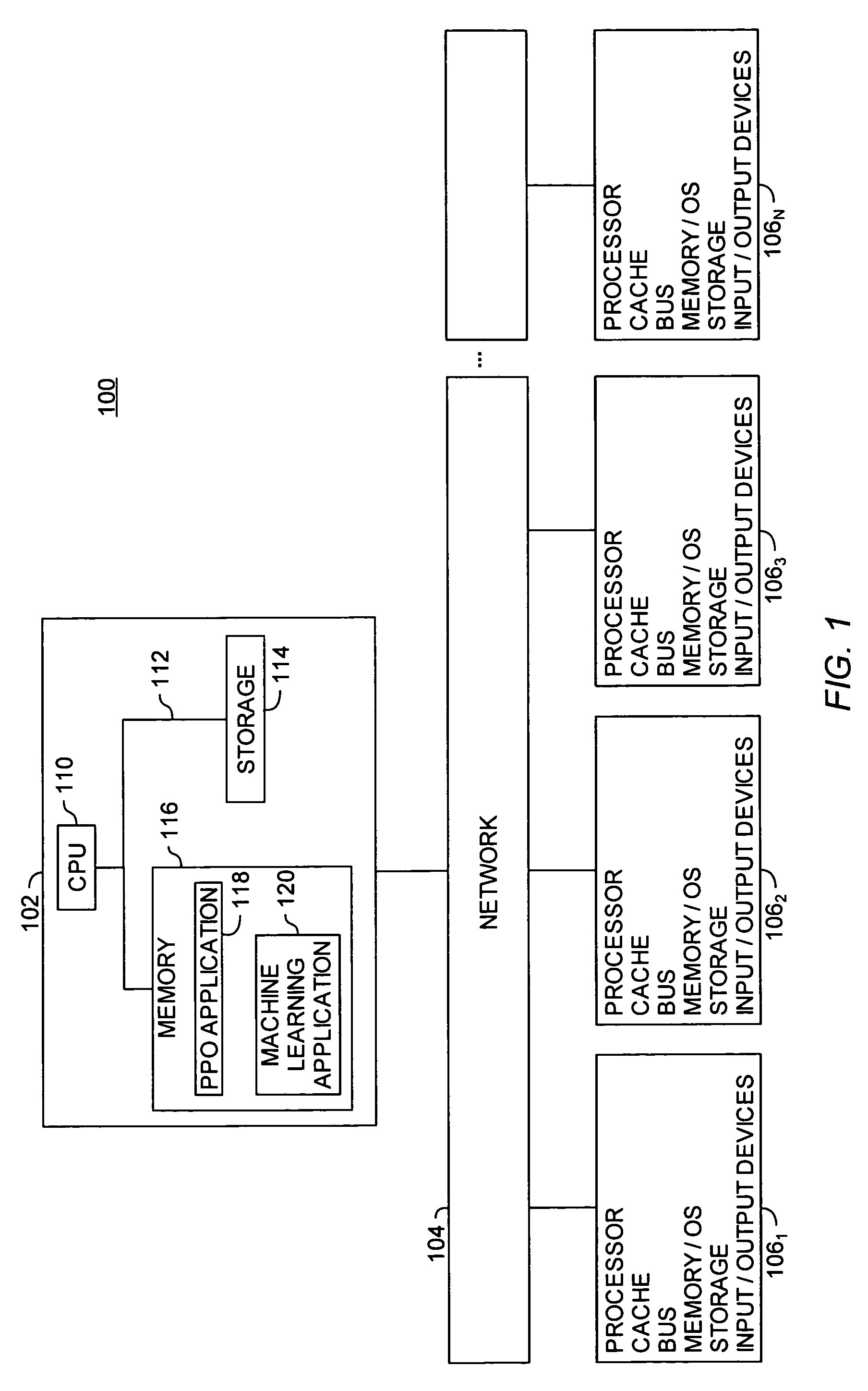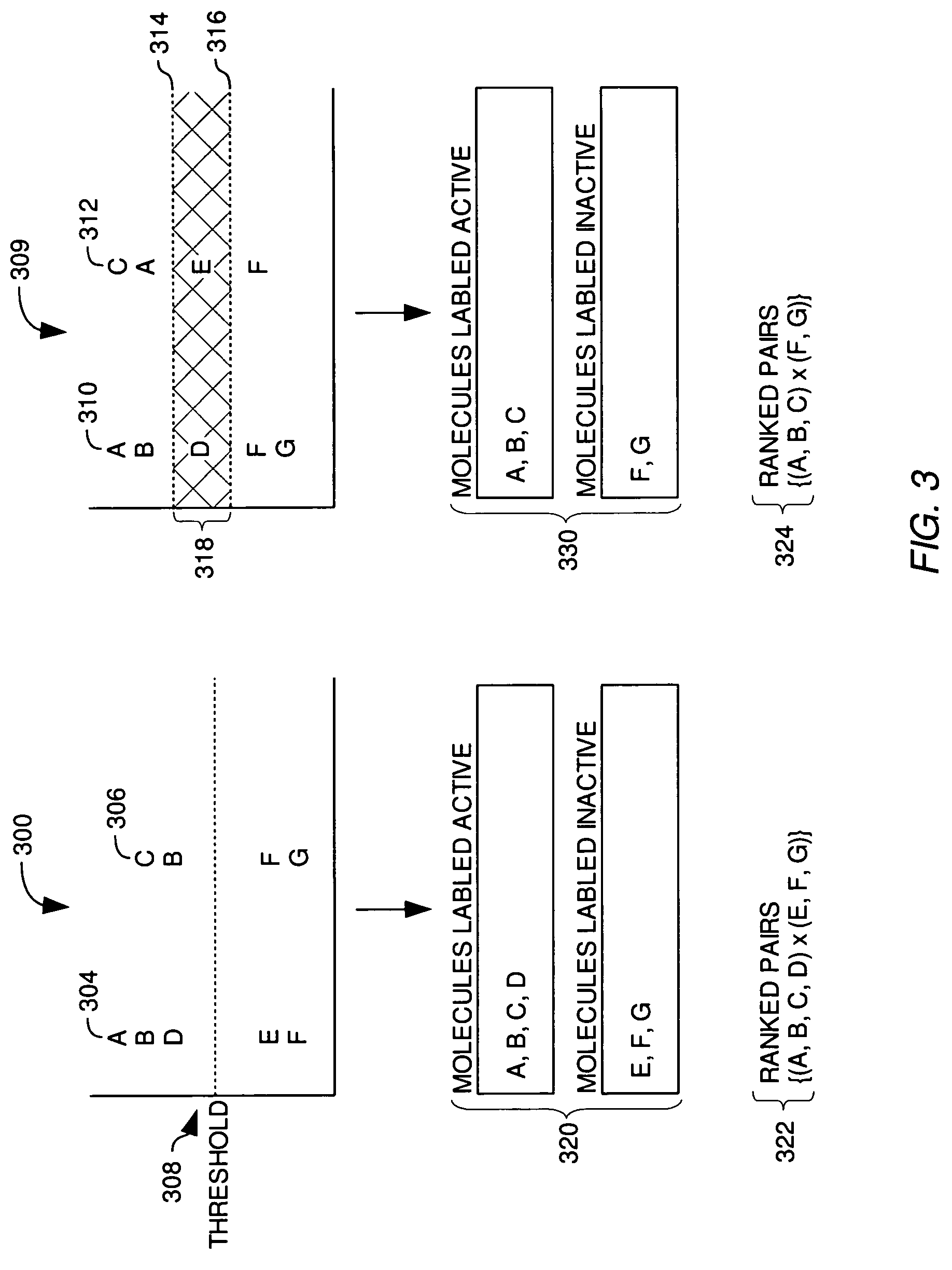Molecular property modeling using ranking
a molecular property and ranking algorithm technology, applied in the field of machine learning techniques, can solve the problems of inconsistent values of properties, ineffective training of molecular properties models with useful predictive power, and ineffective use of training data in either form
- Summary
- Abstract
- Description
- Claims
- Application Information
AI Technical Summary
Benefits of technology
Problems solved by technology
Method used
Image
Examples
Embodiment Construction
[0027]Embodiments of the invention provide novel techniques for modeling molecular properties. Specifically, embodiments of the invention provide novel techniques for training molecular properties models that order sets of molecules relative to a property of interest. Embodiments of the invention generally train a molecular properties model in one of four ways:[0028](i) Embodiments of the invention provide novel techniques for generating ranked training data used to train a molecular properties model. Particular embodiments of the invention may be used to generate ranked data from data that is not provided in a ranked form.[0029](ii) Embodiments of the invention provide techniques that train a molecular properties model using training examples based on ranked data. Embodiments of the invention generate training examples based on ranked data that may be used by a learning algorithm that is not configured to process ranked data.[0030](iii) Embodiments of the invention provide novel te...
PUM
| Property | Measurement | Unit |
|---|---|---|
| bond stability | aaaaa | aaaaa |
| melting point | aaaaa | aaaaa |
| force-field parameters | aaaaa | aaaaa |
Abstract
Description
Claims
Application Information
 Login to View More
Login to View More - R&D
- Intellectual Property
- Life Sciences
- Materials
- Tech Scout
- Unparalleled Data Quality
- Higher Quality Content
- 60% Fewer Hallucinations
Browse by: Latest US Patents, China's latest patents, Technical Efficacy Thesaurus, Application Domain, Technology Topic, Popular Technical Reports.
© 2025 PatSnap. All rights reserved.Legal|Privacy policy|Modern Slavery Act Transparency Statement|Sitemap|About US| Contact US: help@patsnap.com



